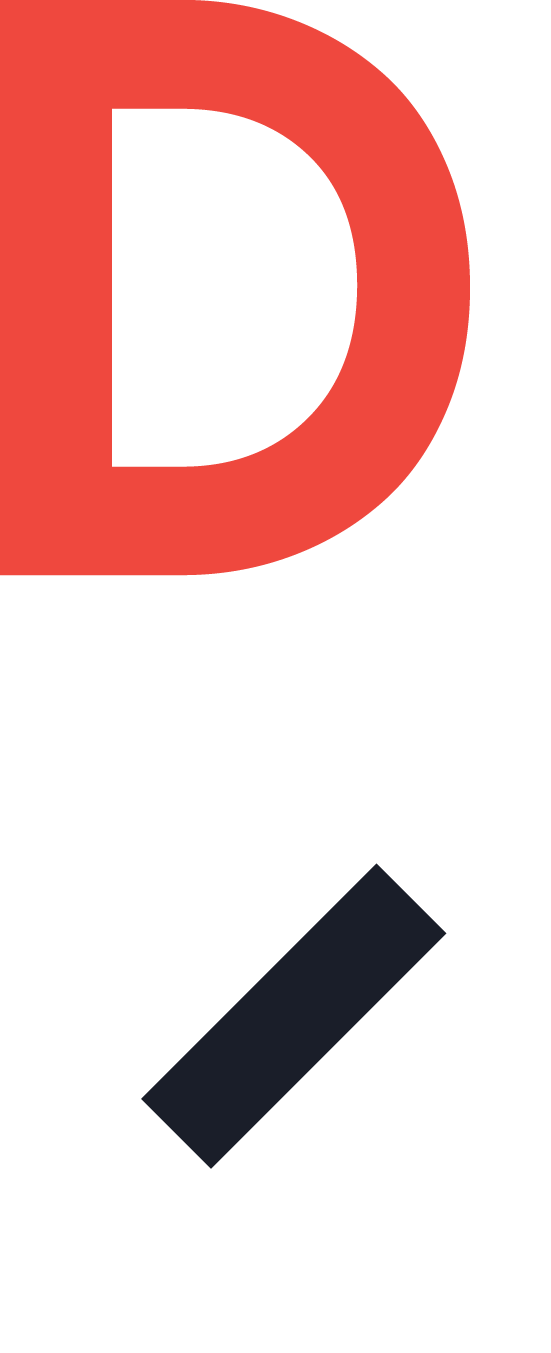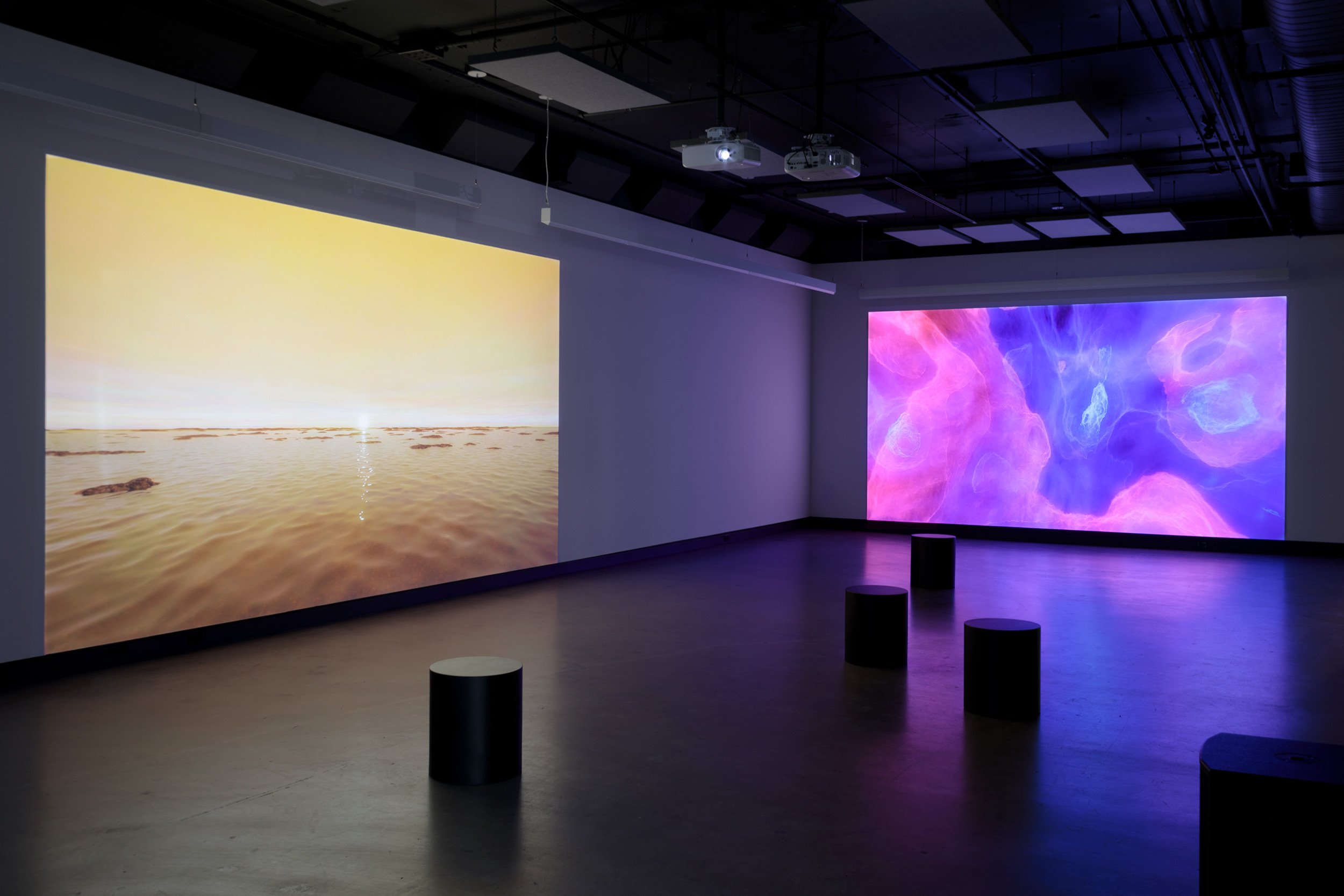Screaming Screen
Rachel Rossin, Frances Scott, P. Staff and Yuri Yefanov
From November 17, 2022 to January 21, 2023
Opening on November 17 at 6 pm
— Facebook
The program's title, Screaming Screen, is meant to elicit and acknowledge the anxiety and violence that is induced by our society as it meets the precipice of environmental and moral collapse. Further, it interrogates the role of images in such a crisis. The works are brought together to look at how real and surreal worlds — the images thereof ranging from archival to computer-generated — are not simply blurred, but are materially bound. The Technocene’s spectacle is facilitated by necropolitics and extractivism while simultaneously promising an escape or alternative reality to the inhabitability it leaves behind. As the planet dies an accelerating death, living bodies caught in the midst, what will disappearance look like? Though digitally treated or generated images might present as fictional imaginaries, they actually suggest that we are already living in the dystopia we dread. Such nightmarish scenes have been depicted in literature and painting for centuries but the renderings seen in this program mirror the present rather than project into the future.
Program
— 45 minutes
Frances Scott, PHX [X is for Xylonite] (2019) — 12 min. 54 sec.
The title, PHX [X is for Xylonite], references cellulose nitrate, otherwise known as Xylonite, which was used as the base for film stock and props until the mid-20th century. Reorienting antagonisms between the organic and synthetic, moving instead through strata of relation, Frances Scott contemplates the image’s means of production and the ways in which its historicity is conjugated by the Anthropocene. 3D images of plastic goods, as though plucked from a future-past via digitization, hover over hand-processed 16mm film, including footage from the demolition site of the original ‘Parkesine’ (celluloid) plastics factory in East London. As excerpts from Roland Barthes's “Plastics” (1957) are read by Polymer Chemistry laboratory technician, Dr. Miriam Wright, a sense of both dismay and miracle coalesce. Here, plastic’s so-called limitless potential for transformation is both a simile and material enabler for the fulfillment of some version of mankind’s personal mythology — simultaneously, its fateful decay.
Rachel Rossin, The Maw of (2022) — 4 min. 38 sec.
Employing real-time virtual reality CGI and novel AI animation techniques, the artist’s half-bird, half-human harpy avatar twirls and sprints across a fantastical virtual landscape invaded by scrolling images appropriated from Elon Musk’s Neurolink press launch. Using diagrams and simplified science meant to be tonally aspirational, the neural implant company explains the brain-to-machine interface currently in development. The harpy (which the artist has used since she was 15) navigates the semiotic realm of such technological advancements as though it were a video game. By probing the visual and textual means through which such developments are communicated, Rossin raises concerns around autonomy and technological literacy at a time when devices and bodies have begun to synthesize.
P. Staff, On Venus (2019) — 13 min. 06 sec.
The first segment of On Venus compiles found footage from animal farming industries: images of animals in their last moments, flesh and fluids, secretions such as urine, semen, and hormones, which in many cases are extracted for medical science. Mercifully, as though otherworldly, the colors are inverted. But this world, in which suffering is redressed by redistributing violence, is nevertheless recognizable. How is it decided, who or what gets to live?
As Staff has suggested, images of this nature have no more meaning than the violence that so bluntly is. Perhaps this dead-end triggers the dissociative second segment, wherein a narrator describes a reality on Venus that is neither living nor dead. This place where there are no seasons and the oceans are gone, where communication is chemical and the body acidic, not entirely different from Earth, hosts a parallel form of life that endures such ambient violence.
Yuri Yefanov, The Wind Probably (2021) — 10 min. 41 sec.
An unseen narrator looks out on Podil, in Kyiv, but the image is filtered through a scrim of calcified digital residue, augmented with virtual beings and architecture. Familiarity and orientation seem to have been sucked into a black hole. More severe than ennui, legitimate disembodiment is a consequence of life’s hollowing. He floats in and out of casual discussions with friends who appear via glitchy interfaces, while more serious discussions are had with some type of artificial intelligence: “And we won’t be able to breathe, to eat, but simply become something else. Then after death, if it will exist at all, we will also fall into lawlessness, it turns out.”
Rachel Rossin is a multimedia visual artist, researcher, and computer programmer who lives and works in New York. Born and raised in Florida, she began teaching herself programming at age 8. She is internationally recognized for having developed unique techniques which blend virtual or augmented reality environments with painting and sculpture.
In 2015, Rossin received the first fellowship in Virtual Reality Research from New York’s New Museum’s incubator, NEW INC, where she developed her work for the 2017 edition of New Frontier at the Sundance Film Festival and for the exhibition First Look: Artist's VR co-presented by Rhizome and the New Museum. She was a 2017 Forbes 30 under 30 Fellow and received a Prix Ars Electronica in Computer Animation in 2020. Rossin has presented her work at Stanford University, the Städelschule (Frankfurt), the School of Art Institute of Chicago, the Pratt Institute (New York), and the Massachusetts Institute of Technology.
Frances Scott is a London-based artist working with moving images. Her work explores narratives within history and the cinematic apparatuses through which they take shape, often rescoring different fragmentary or forgotten components to diverge antecedent understandings. Exhibitions and screenings have included presentations with Rencontres Internationales Paris/Berlin, International Short Film Festival Oberhausen, transmediale, HKW Haus der Kulturen der Welt and CTM Festival (Berlin), New York Film Festival, Matt’s Gallery, The Bower, the Annely Juda Fine Art and Whitechapel Gallery (London).
Frances Scott was recipient of the Stuart Croft Foundation Moving Image Award (2017), and is currently working on a new film commissioned by TACO! (London) for a solo exhibition and publication.
P. Staff is a British interdisciplinary artist, performer and writer living and working between Los Angeles and London. Their works combines installation, video, performance and publishing to address the violence of biopolitics especially in relation to the queer, non-binary and trans body.
Their work has been exhibited at the Irish Museum of Modern Art (Dublin), Dundee Contemporary Arts, the Museum of Contemporary Art (Los Angeles), the New Museum (New York), the Contemporary Art Gallery (Vancouver), the Tate Liverpool, Serpentine Galleries, Chisenhale Gallery, and the Tate Modern (London), among others.
Yuri Yefanov is a Ukrainian artist and filmmaker living and working in Kyiv. Searching for meaning, his work problematizes structures of interactions in everyday life and politics by devising his own systems or mythology — at once serious and ironic.
Yuri Yefanov graduated from the Kyiv University of Culture and Arts at the Faculty of Film and TV Directing. He has participated in several film festivals and exhibitions in Europe and North America, including the Athens Digital Arts Festival, the WNDX Festival of Moving Image (Winnipeg), and the Mystetskyi Arsenal (Kyiv). Most recently, his work has been presented at the Art & History Museum (Brussels), and the International Short Film Festival Oberhausen.
Other exhibition
Julie Tremble
From November 17, 2022 to January 21, 2023
Mediation
À l’image — Takeover 2
À l’image — Takeover is a participatory art series in which, over two years, a group of young Montrealers intervenes and responds to Dazibao’s exhibition programming, collaborating with each other and their mentor, artist Veronica Mockler.
A video program prepared for Dazibao by France Choinière, assisted by Yuko Fedrau, Emma-Kate Guimond and Marie Saadeh. Dazibao thanks the artists for their generous collaboration as well as its advisory programming committee for its support.
Dazibao receives financial support from the Conseil des arts et des lettres du Québec, the Canada Council for the Arts, the Conseil des arts de Montréal, the Ministère de la Culture et des Communications and the Ville de Montréal.
Dazibao acknowledges that we are located on unceded territory of the Kanien'kehá: ka Nation and that Tiohtiá: ke / Montreal is historically known as a gathering place for many First Nations, and today, is home to a diverse population of Indigenous as well as other peoples.

![© Frances Scott, PHX [X is for Xylonite] (2019). Installation view of the exhibition Screaming Screen , Dazibao, 2022. Photo: Document original.](https://images.squarespace-cdn.com/content/v1/581a0042197aea1a94d1a267/1669154061039-0EXAT0BNLB1AAPLVSFYO/1-screaming-screen_frances-scott.jpg)
![© Frances Scott, PHX [X is for Xylonite] (2019). Installation view of the exhibition Screaming Screen , Dazibao, 2022. Photo: Document original.](https://images.squarespace-cdn.com/content/v1/581a0042197aea1a94d1a267/1669154061065-D0FDBGLVOF8XAKKD2RY8/2-screaming-screen_frances-scott.jpg)






